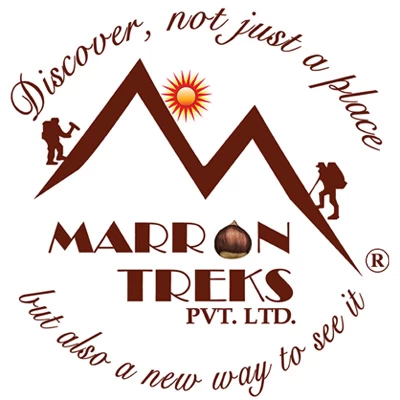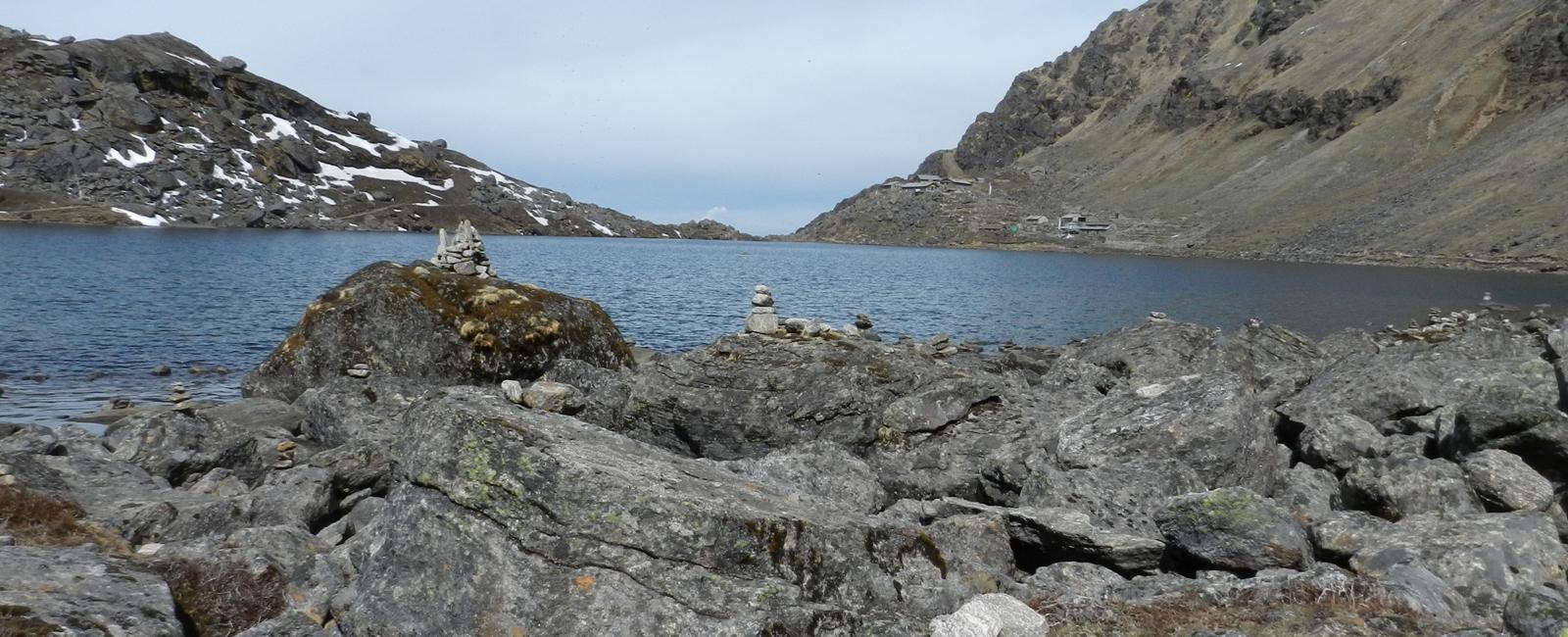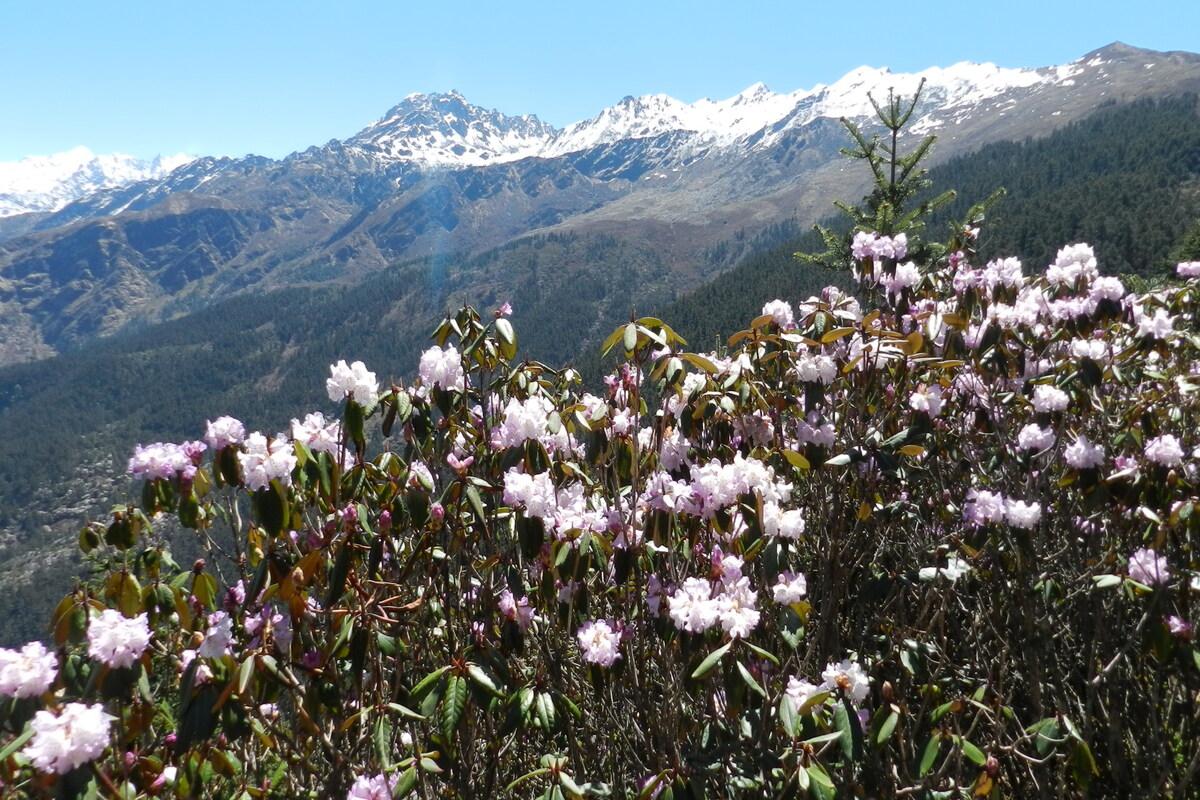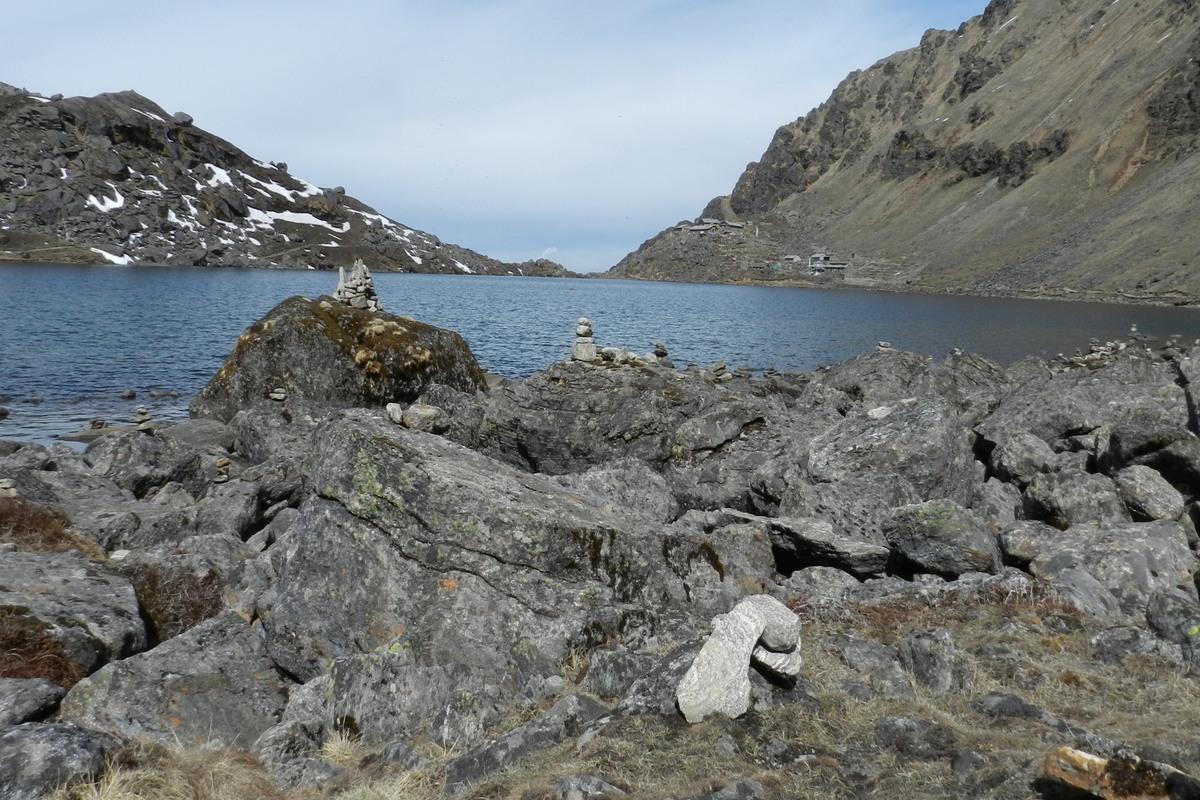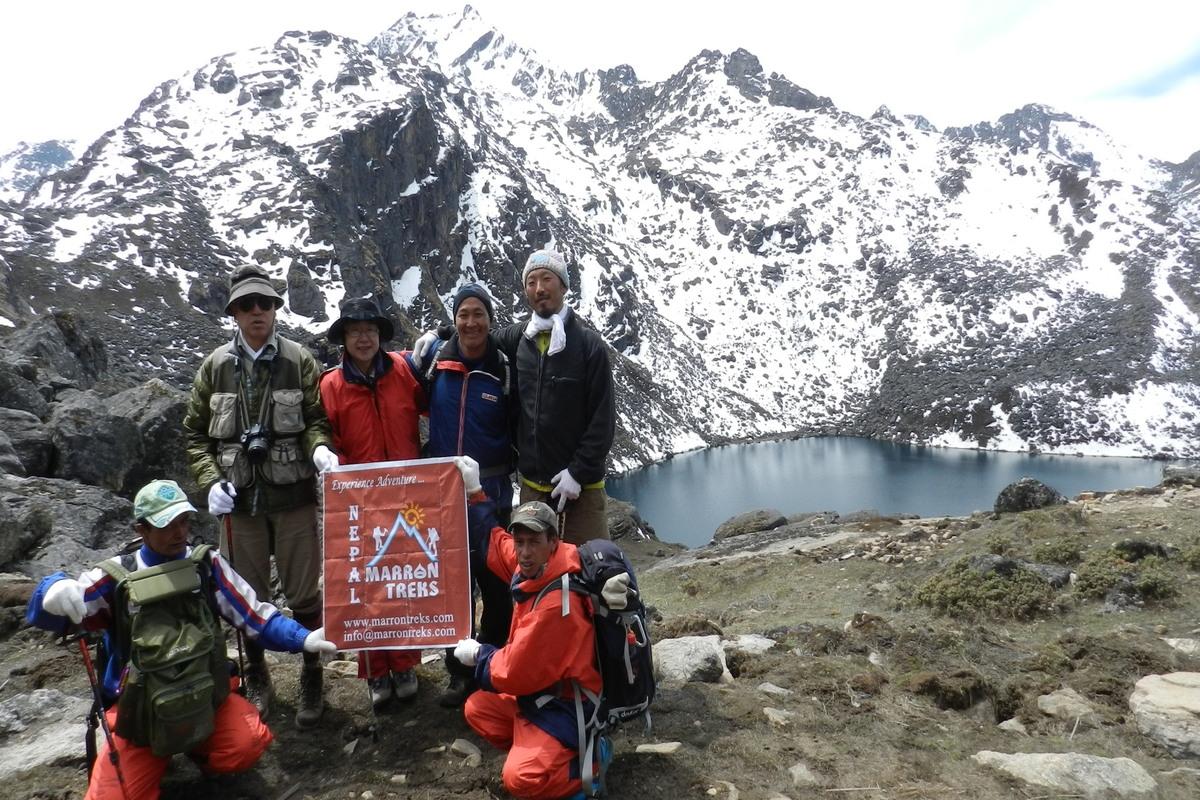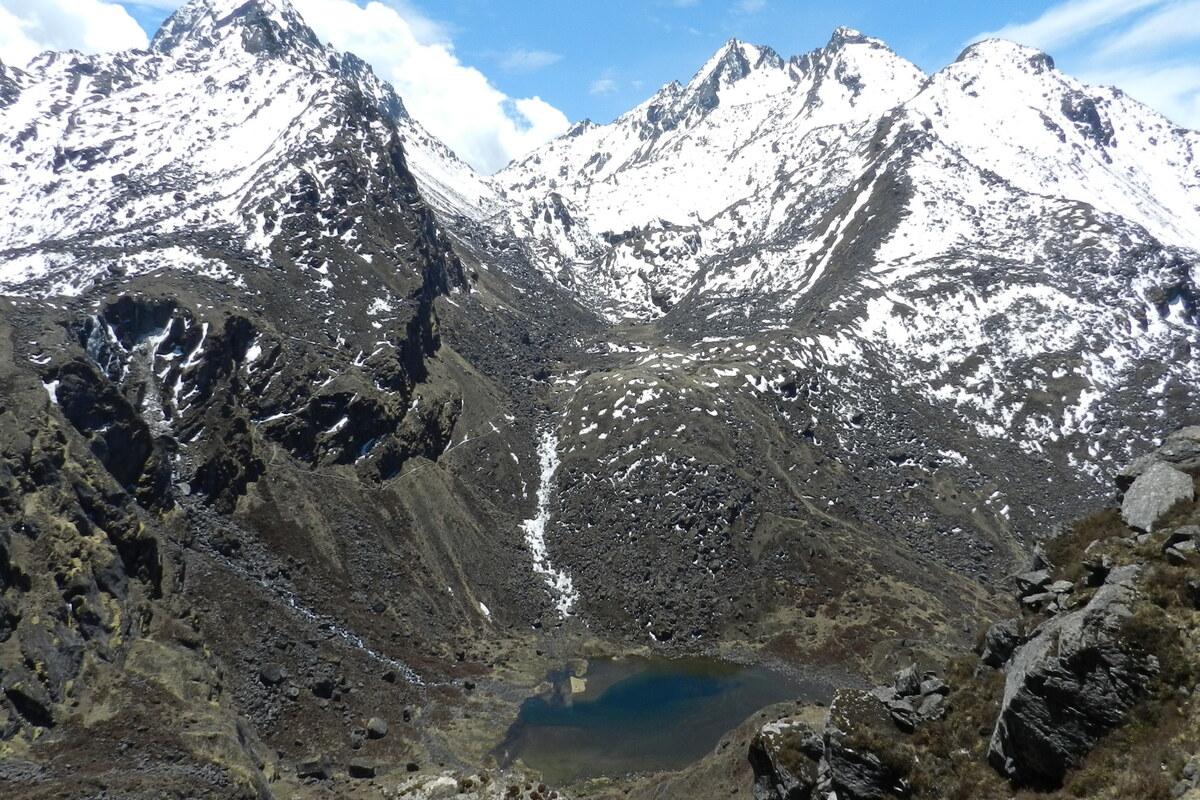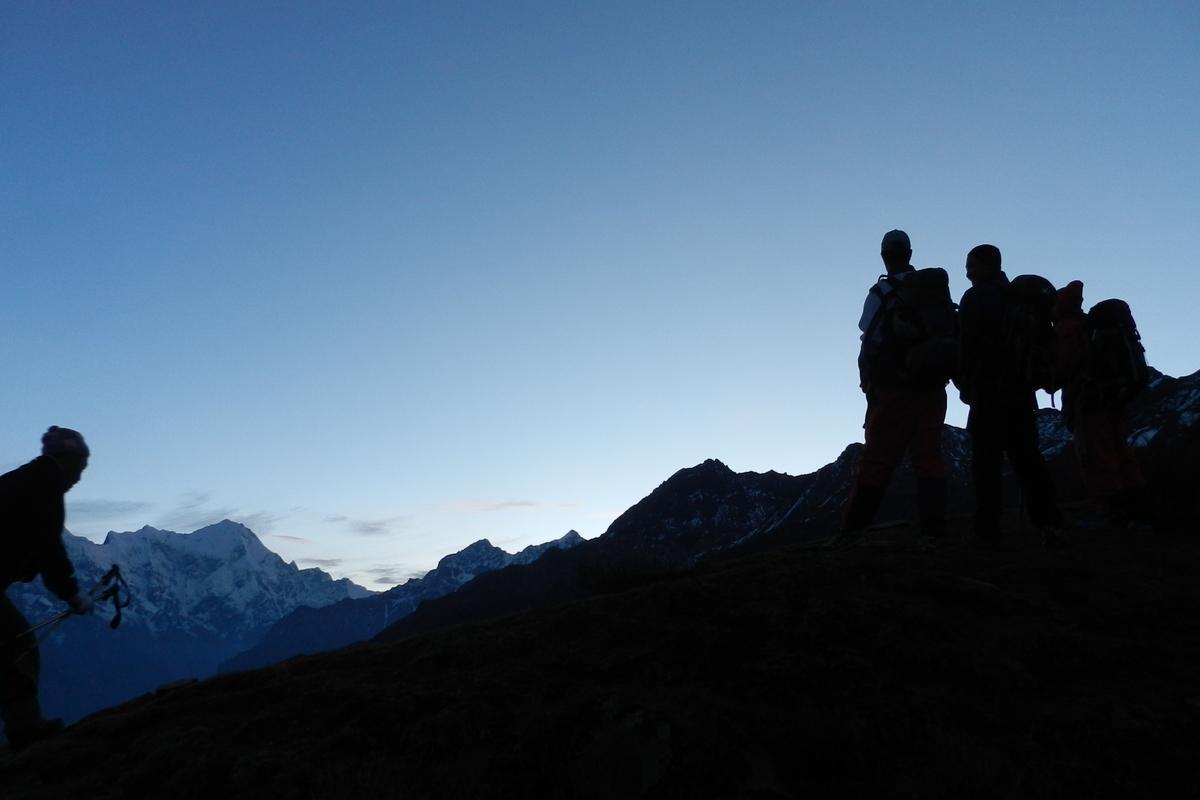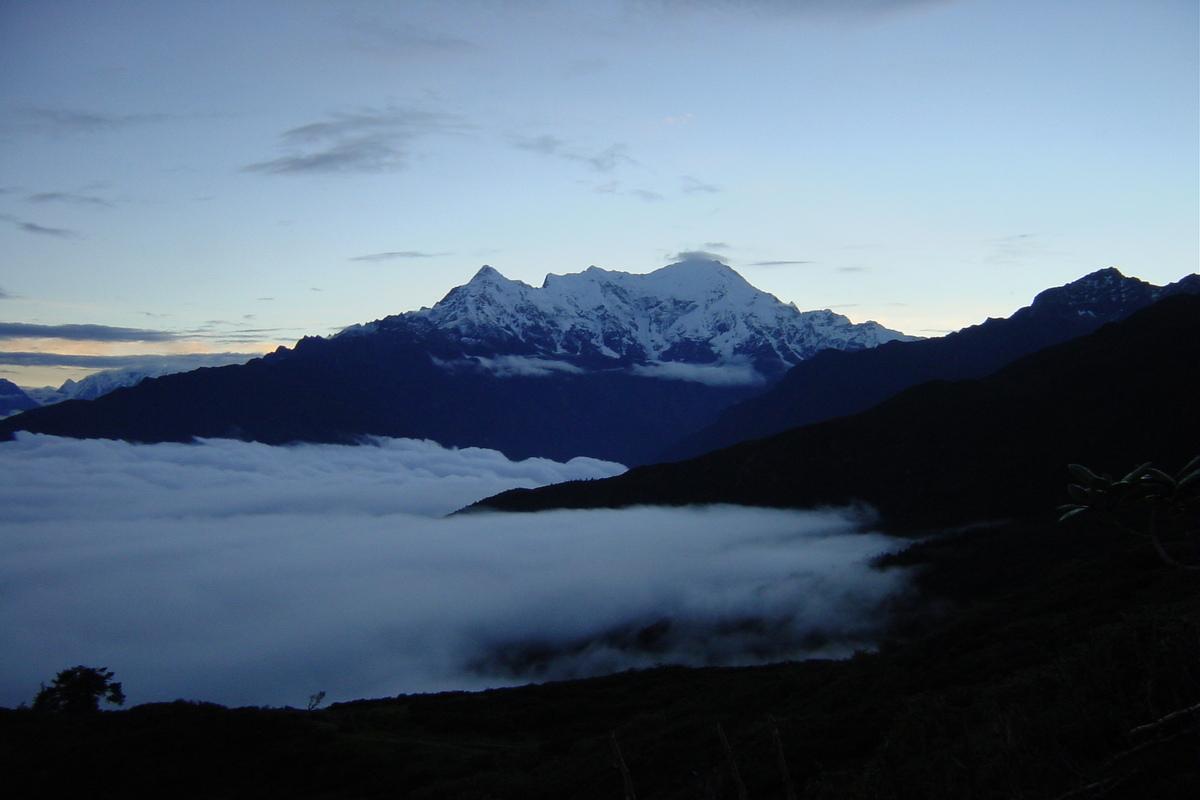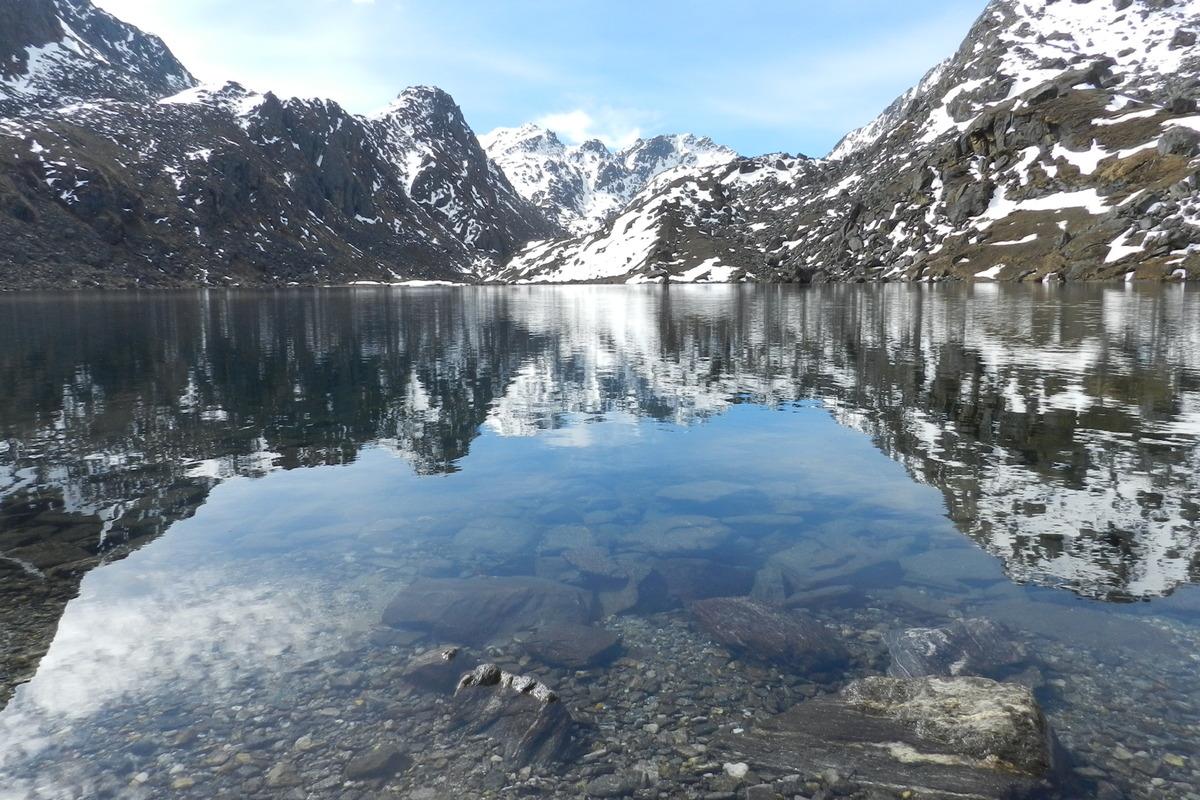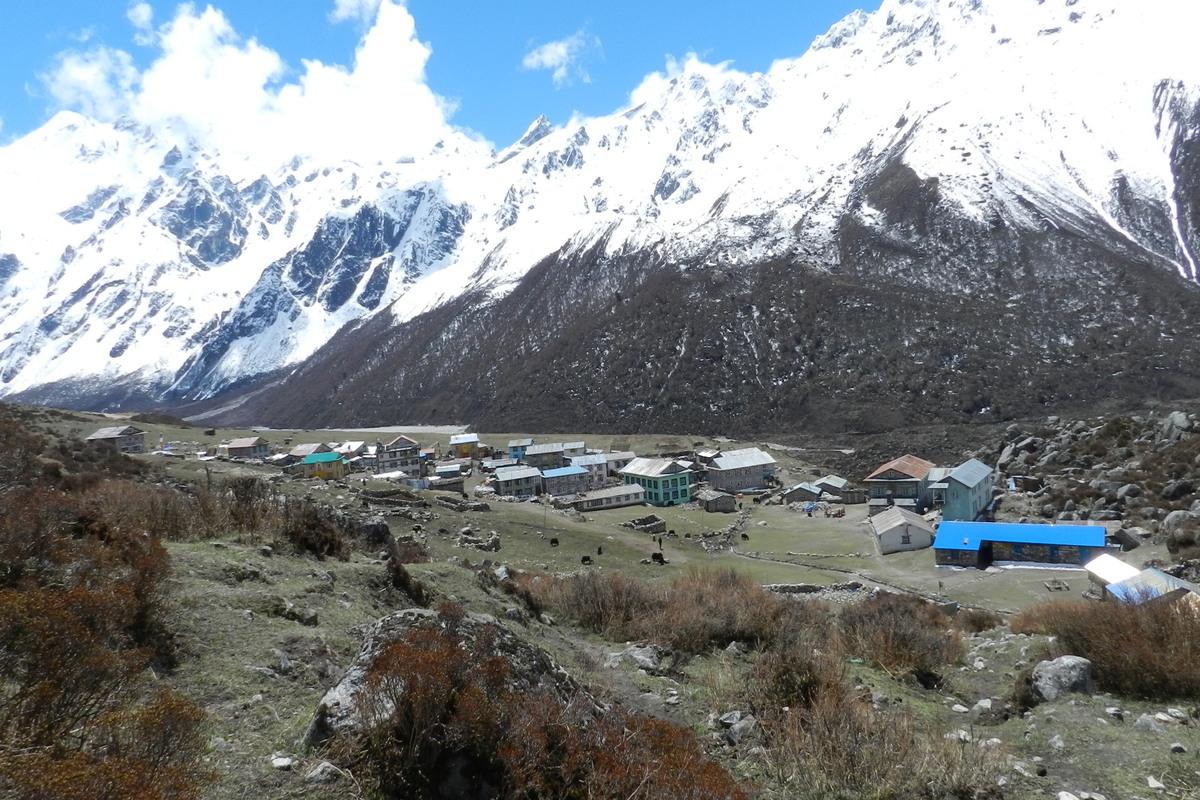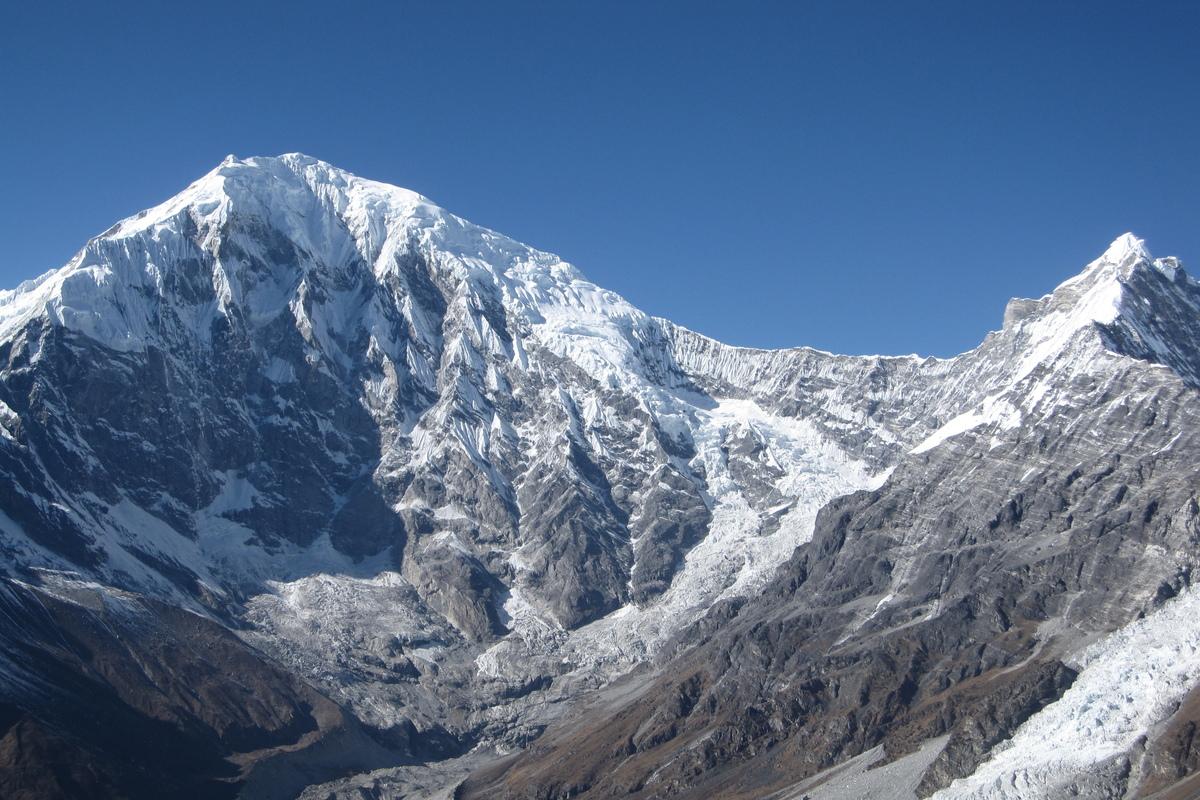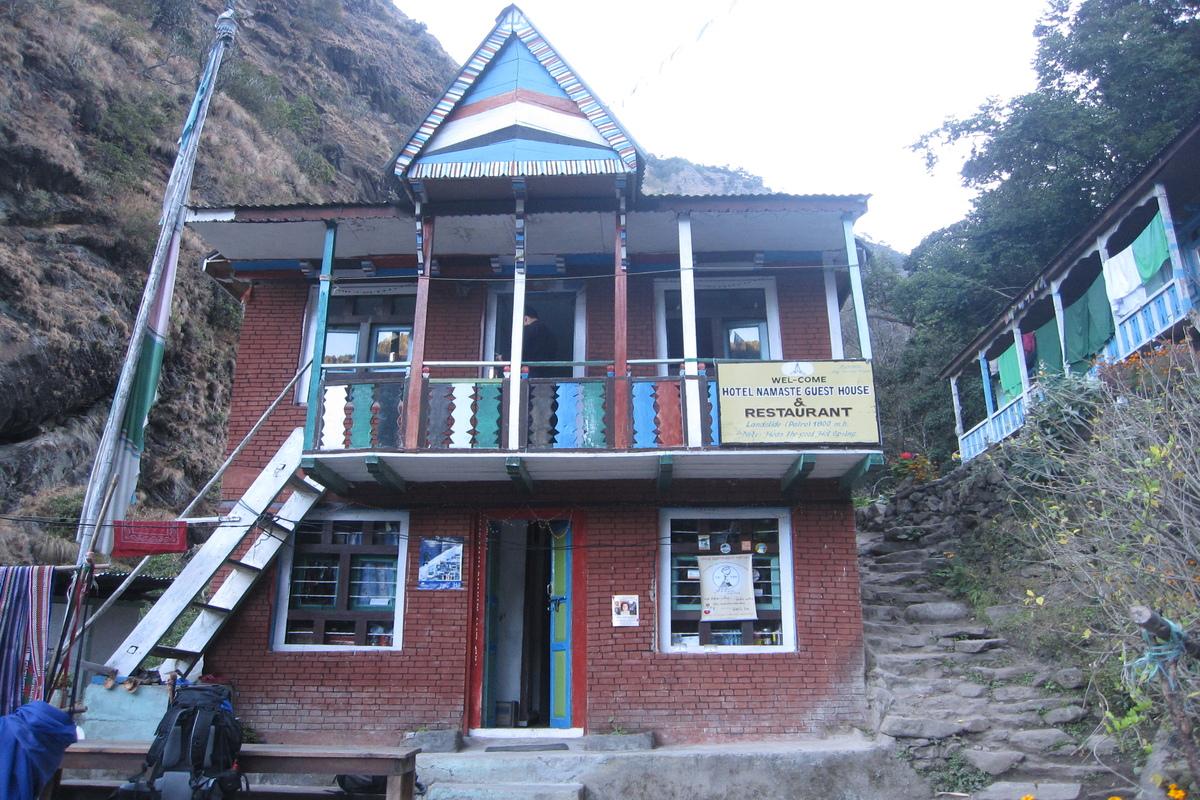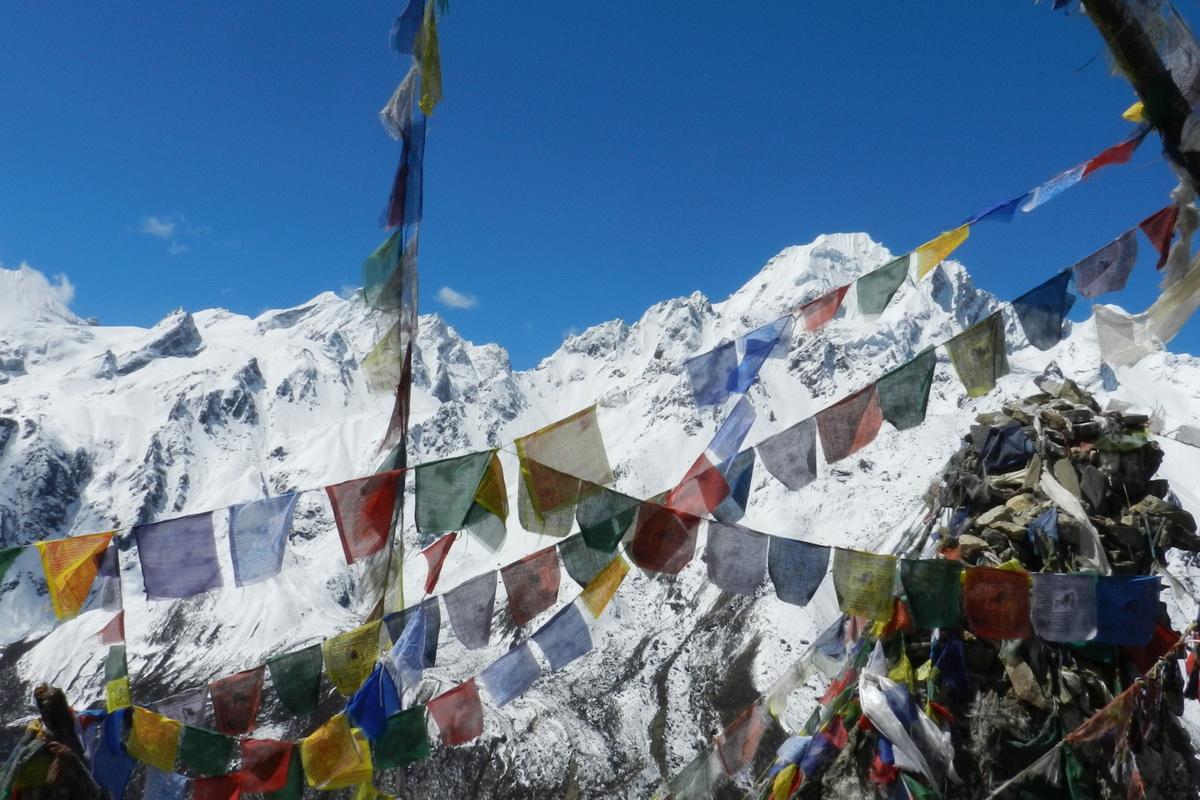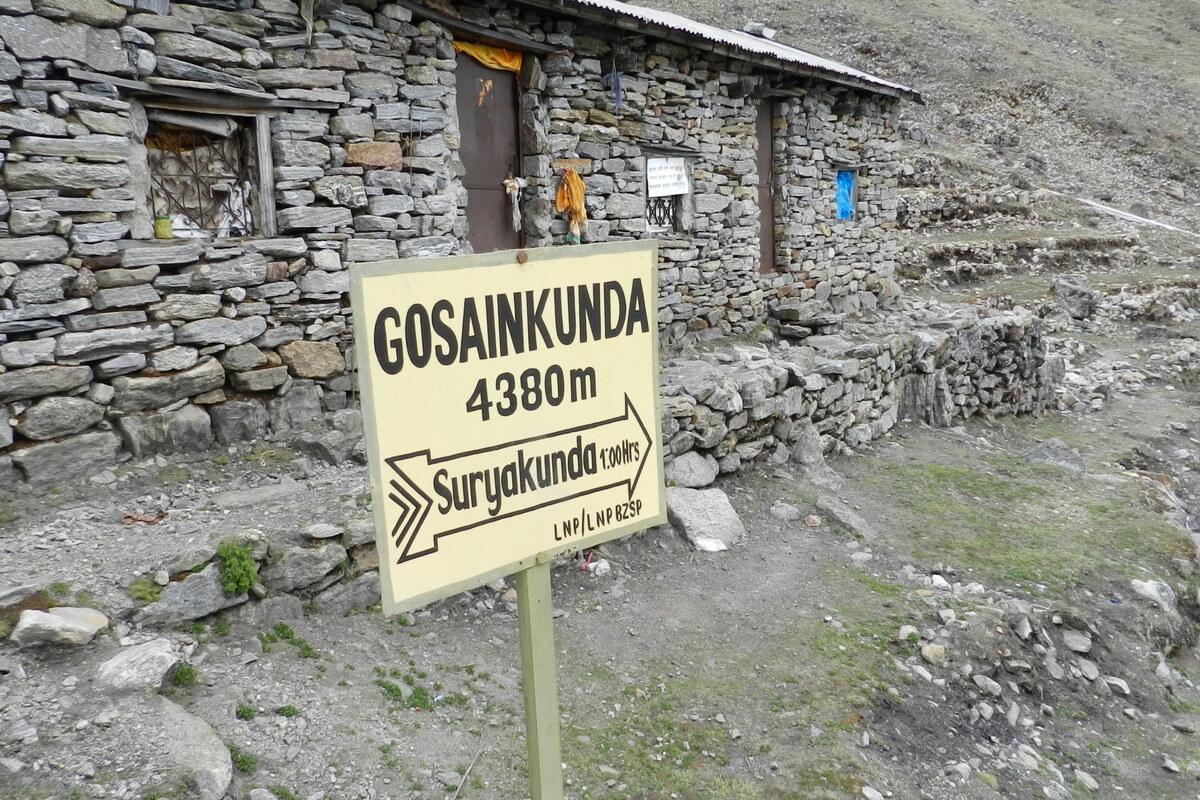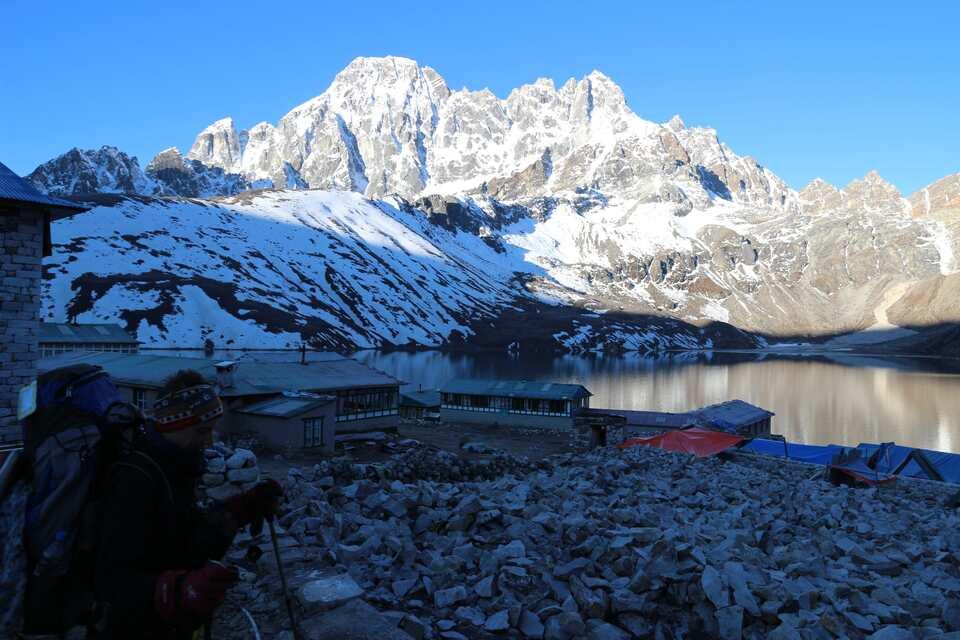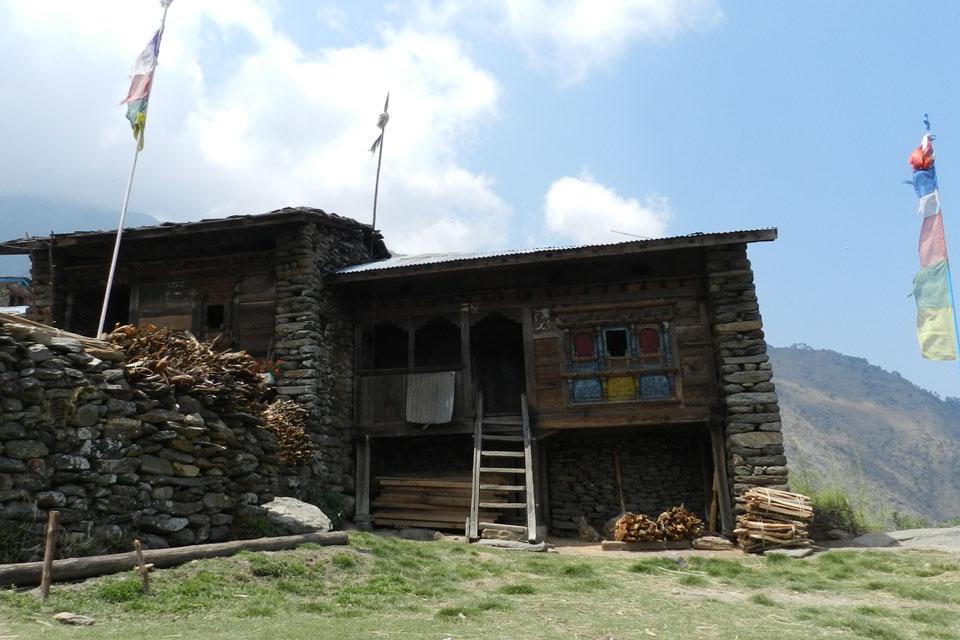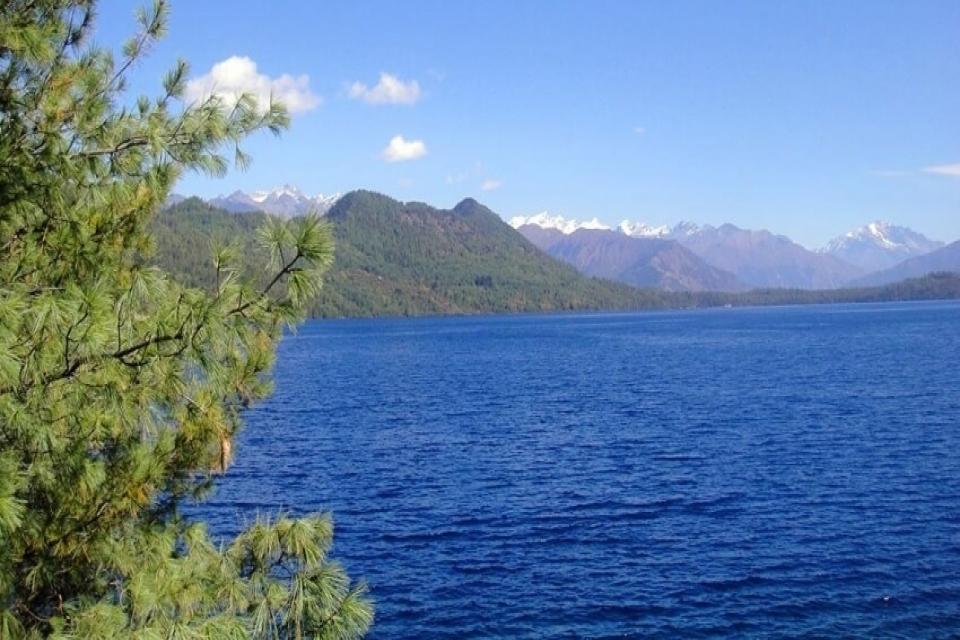Langtang Gosaikunda Trek
Trip at a Glance
Langtang Gosaikunda Trek is an outstanding trek in the Langtang region that combines Langtang Valley and Gosaikunda Lake. Gosaikunda Lake is a high-altitude lake at an elevation of 4,380 meters, which is scary to Hindus and Buddhists. The trek offers alluring landscapes, spectacular Himalayan views and the finest cultural experiences.
Langtang Gosaikunda Trek can be done to the north of Kathmandu near the Nepal-Tibet border and is located within a short distance from Kathmandu City. Langtang Gosaikunda trek itinerary follows the same path of Langtang Valley trek where you will have a nice opportunity to visit Kyanjin Gompa at 3,865 meters.
Trek to Langtang Gosaikunda starts from Syabrubesi where you take an overland drive from Kathmandu for about 8-9 hours. Then you walk through lush forests and remote villages, passing by streams and waterfalls on the way making your way through to Kyanjin Gompa. Take a day-hike to Tserko Ri (4,984m) whilst at Kyanjin Gompa, the popular Himalayan viewpoint in Langtang, which provides majestic Himalayan panorama.
You will the retrace your way back to Lama Hotel and move ahead to Thulo Syabru (2,210m) to get to the holy lakes of Gosaikunda. Gosaikunda Lake is pilgrimage site for both Hindus and Buddhists. During the full moon in August many Hindu pilgrims pay a visit to the lake in a festival called Janai Purnima.
Langtang Gosaikunda Trek is a moderate-level trek where trekkers will have the opportunity to experience the rich culture, witness spectacular Himalayan views and enjoy the tranquility of the alpine freshwater Himalayan Lake.
Langtang Gosaikunda Trek Highlights
- The renowned cheeses factory of Kyanjin Gompa.
- Langtang valley's Tamang and Tibetan culture and hospitality.
- Visiting the Gosaikunda holy lake.
- Gosaikunda La Pass (4610m) ascent.
- Beautiful valleyes & stunning mountain views.
- Climbing Kyanjin Ri or Tsergo Ri.
Itinerary
Day 01: Arrival in Kathmandu (1400m)
Day 02: Drive from Kathmandu to Syabrubesi (1,460m/8–9 hrs)
Day 03: Trek From Syabrubesi to Lama Hotel (2,500m/5 – 6 hrs)
Day 04: Trek from Lama Hotel to Langtang village (3,430m/5 – 6 hrs)
Day 05: Trek from Langtang village to Kyanjin Gompa (3,865m/4-5 hrs)
Day 06: Exploration Day at Kyanjin Gompa (3,870m)
Day 07: Trek from Kyanjin Gompa to Lama Hotel (2,470m//5 – 6 hrs)
Day 08: Trek from Lama Hotel to Thulo Syabru (2,210m/5 – 6 hrs)
Day 09: Trek from Thulo Syabru to Cholangpati (3,654m/5 – 6 hrs)
Day 10: Trek from Cholangpati to Gosainkunda Lake (4,380m/5 hrs)
Day 11: Trek from Gosainkunda Lake to Ghopte (3,530m) via Laurebina Pass (4,610m/8-9 hrs)
Day 12: Trek from Ghopte to Kutumsang (2,470m/5 hrs)
Day 13: Trek from Kutumsang to Chisopani (2,295m/5 – 6 hrs)
Day 14: Trek from Chisopani to Sundarijal (1380m/4 hrs) & drive to Kathmandu (1300m/1 hr)
Day 15: Final Departure
Arrive in Kathmandu and one of our representatives will receive you and then transfer to your hotel in Kathmandu. The rest of the time is free to explore the city where your hotel is located which is usually at Thamel – the popular tourist hub in Kathmandu where every needs and facilities for the tourist are located like hotels, pubs, restaurants, departmental stores, trek gear shops etc. Or you can simply rest at your hotel if you are jet lagged and get ready for an amazing Himalayan trek.
After breakfast take a scenic drive to Syabrubesi northwest of Kathmandu. The road passes through raging rivers, terraced fields, typical Nepali villages, small towns and snow-capped peaks. It’s a smooth road up till Trihuli then it become little rugged ascending to Dhunche and finally descending down will reach Syabrubesi. It’s a bazaar town which also has a riverside hot springs.
The trek begins from Syabrubesi crossing the Bhote Khosi to Lantang River. Then follow the Langtang River passing along fertile jungle and terraced fields. You will then cross the landslide area and climb up to Bamboo and gradually ascend to Rimche, located at the bank of Langtang River. En route cross several rural villages, bamboo and birch forests where you might spot the rare Red Panda. Continue to reach Lama Hotel.
Today also continue along the Langtang River ascending through dense forests. En route witness good views of the snowy peaks. At Ghode Tabela the narrow river valley widens out. there was a Tibetan resettlement project running here in the past. At Ghode Tabela your permits are checked then you will cross the east side of the river where the Langtang Valley becomes more closer. After you walk passing prayer wheels driven by flowing water and prayer flags Langtang Village is reached which is inhabited by Tamangs.
Today also continue along the Langtang River ascending through dense forests. En route witness good views of the snowy peaks. At Ghode Tabela the narrow river valley widens out. there was a Tibetan resettlement project running here in the past. At Ghode Tabela your permits are checked then you will cross the east side of the river where the Langtang Valley becomes more closer. After you walk passing prayer wheels driven by flowing water and prayer flags Langtang Village is reached which is inhabited by Tamangs.
Today is exploring around Kyanjin and for acclimatization too. The upper Langtang Valley offers stunning close views of the tall mountains and glaciers. Today you will visit several places like the Yak Cheese factory, Kaynjin Gompa Monastery. You can also hike to Langshisha Kharka and the Tserko Ri (5,033m) viewpoint to catch spectacular Himalayan panorama of peaks like Langtang Lirung (7,227m), Langtang II (6,596m), and Yala peak (5,500m). Then return to Kyanjin.
Bid farewell to Upper Langtang Valley and descend down taking you out of the valley. Follow the same route you took to get to Kyanjin Gompa. En route pass along Langtang Village and stop for lunch at Ghode Tabela. After a leisurely descend through the dense forests of the river valley will get to Lama Hotel.
Today the trail descends to the banks of Langtang Khola and cross a small waterfall. It passes through rhododendron and bamboo forest, teeming with wild lives like wild boar and monkeys. En route observe beautiful view of Ganesh Himal. It’s a long walk today and after crossing a suspension bridge will reach the bottom of the Thulo Syabru village.
After breakfast climb upwards and pass Langtang National Park’s army checkpoint. Daragang is reached after half an hour of walking uphill. From here the path is less steep which passes through the hemlock and oak forest. You may spot Red Panda on the forest. Continue your trek crossing along Dhimsa and Sing Gompa and finally to Cholangpati.
Today climbing up the most popular peak, Langtang Himal (7234 m), can be seen. You will walk on a desolated barren mountain trail. As the trail goes higher you will spot more majestic peaks like Langtang Himal, Ganesh Himal, and even the Annapurnas on the west horizon. After few hours of walking will arrive Lauri Binayak then begin the uphill climb to Gosaikunda. It’s a two hours of steep climb to reach a chorten and after an hour of walking you will see of beautiful waterfalls and lakes – Saraswati Kunda and Bhairav Kunda which are formed by water flowing from Gosainkunda. Gosaikund is the scared place for both Hindus and Buddhist where Hindus believe the lake is the favourite place of Lord Shiva’s.
Today is crossing over Lauri Bina high mountain pass to the scenic Helambu region. The path first descends from the lodge to Gosaikunda Lake and you will work the northern shore where it starts to get steep to approach the pass. Before reaching the pass you need to pass along three or more small lakes.
The Laurebina La Pass is marked with a stone stupa and many praying flags and is the highest point on the trek. After the pass descend through a wide valley to High Camp (4240m). Walking further down on a steeper and rocky path will reach Phedi. Then again descend from Phedi to footbridge across a stream. The journey from Phedi to Ghopte is demanding with long ascents.
The trail crosses through groves of juniper, rhododendron, and pine in a remote, unpopulated area before we reach the peaceful highland setting of Tharepati. Then it descends gently the forest on the western ridge slope. Walking for a while you will pass a large meadow with ruins of shepherd’s huts. En route enjoy views of Gangchempo and Dorje Lakpa peaks. Then the descent gets steeper as it leads through a forest to Magin Goth (3265m). After a short walking you will pass Kuala Bhanjyang (3335m) and descend to the village of Kutumsang (2470m).
After breakfast you will ascend for a while then descend to Gul Bhanjyang (2140m) Village. Then climb up to reach a dusty wide road at Thorong Danda (2500m) and continue on a steep and rocky path to Chipping village. The trail then drops down steadily and reach Pati Bhanjyang (1760m) – a village between Chipping and Chisopani. Chisopani is reached after half an hour walk from here.
A few minutes of walk from Chisopani will reach Shivapuri National Park checkpoint. Then follow a wide road down hill then on a paved path up the hill. After walking past the water reservoirs and big water pipes will reach Sundarijal where you vehicle will be waiting for you for the drive to Kathmandu.
The trip concludes and our office representatives will take you to the international airport in Kathmandu to catch your onward flight to your next destination or fly back home. You need to be at least 3 hours prior to your flight time at the airport.
Thank you for visiting Nepal and we hope your Himalayan Holiday has come true. Have a safe flight back home!
What is included?
- Airport pick-up and drop services.
- Hotel accommodations in Kathmandu with breakfast.
- Kathmandu/Sybrubesi & Sundarijal/Kathmandu transfers by a local bus. (Option: Private Vehicle)
- All trekking accommodations with Breakfast/Lunch/Dinner at local lodges.
- Four seasonal sleeping bags (to be returned after trip completion) & Marron Treks duffel bag
- A comprehensive medical kit (will be carried by the trekking guide).
- Experienced Government licensed English Speaking Guide & Porter (1 porter for two people) including their food, accommodation, salary & insurance.
- Permits for Langtang National Park, & TIMS (Trekkers' Information Management System).
- All government and local taxes.
- Farewell dinner with a live Nepalese cultural program.
What is not included?
- International airfare.
- Nepal entry visa fee – Visa can be obtained upon your arrival at the Tribhuwan International Airport in Kathmandu. (USD30 for 15 days)
- Lunch & dinner in Kathmandu.
- Personal travel insurance.
- Emergency rescue evacuation (to be covered by the client's travel insurance).
- Other expenses of a personal nature (phone calls, laundry, battery recharge, extra porters, bottle or boiled water, hot shower etc.)
- Bar bills, alcoholic drinks & beverages.
- Tips to guide & porters (Tipping is expected).
Route Map
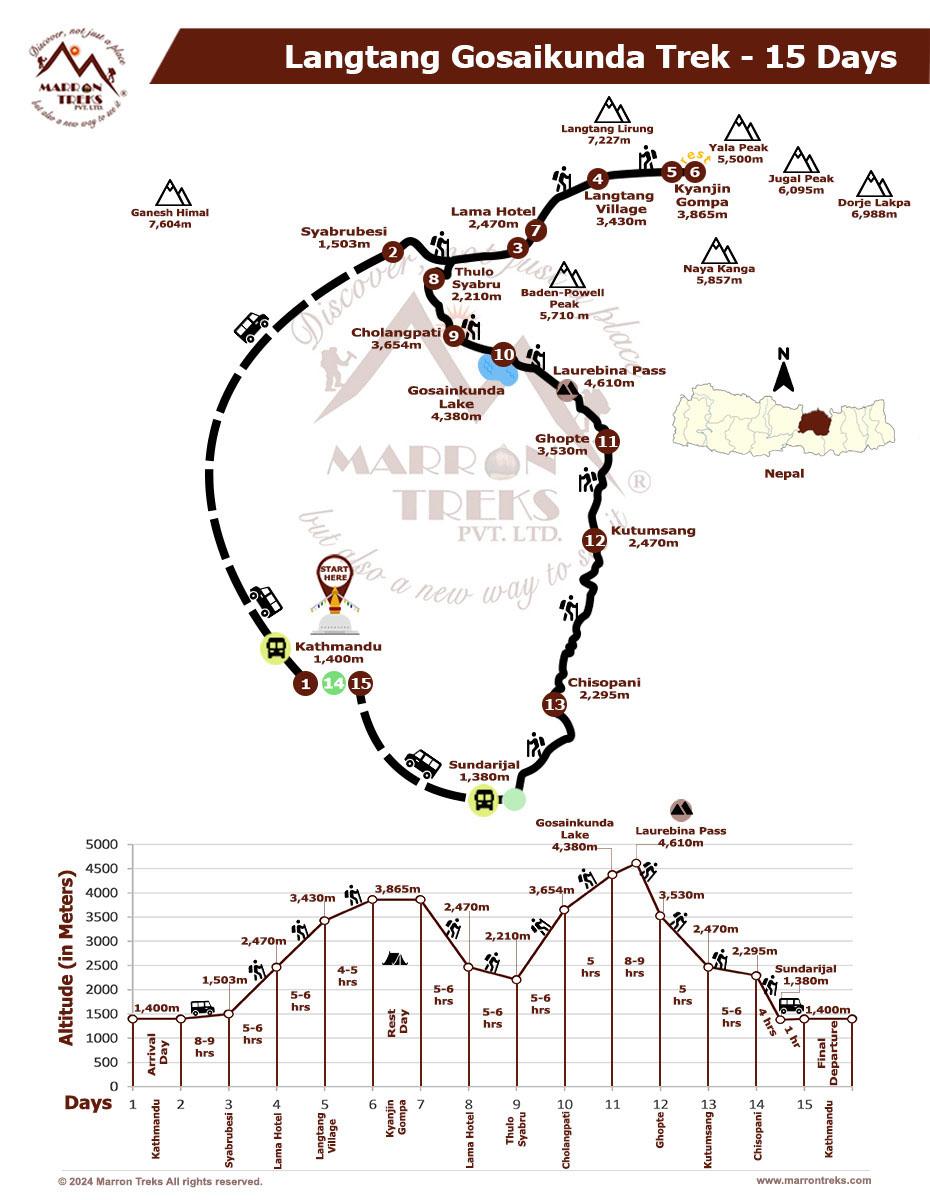
Trip Info
Accommodation
While you are in Kathmandu, we opt to accommodate you in 4- or 5-star hotels like Hotel Royal Singhi (4-star), Hotel Manaslu (4-star), Radisson (5-star), Yak & Yeti (5-star), or similar. During the trek, you will be accommodated in a local mountain lodge, better known as Tea House. These lodges and teahouses provide good services and are equipped with basic amenities. We will endeavor to provide you with the best accommodation available along the route so that you get a good night’s rest in a hygienic milieu.
Meals
We never compromise the quality of food or the health of the trekkers as well as the crew members. Generally, we opt for the fresh and nutritional local community food available. You could make your delicious pick from an array of traditional foods like Sweet potatoes, buckwheat barley, etc. This way, you could not only get a real sense of the local culture and life patterns but also contribute to promoting the locally available resources of organic food and beverages. Besides, a wide range of Continental, Chinese, Italian and Indian cuisines like Pizza, Spaghetti, French Fries, Soups, Breads, Masala curry, etc. are also available in the restaurants for your retreat.
Acclimatization
Altitude sickness is a serious risk while trekking in the Himalayas. It's important to acclimatize properly by spending a few days at lower altitudes before heading higher. By spending time at lower altitudes before pushing higher, your body has time to adjust. Our trekking packages have enough acclimatization days planned where you'll be spending a day or two at lower altitudes, allowing your body to adjust to the increasing altitude.
Electricity & drinking water
For an additional cost, you can use the electricity in all tea houses and lodges to recharge your batteries. The lodges have packaged mineral water for sale, or you can fill your bottle with boiling water. To make water drinkable, you can use water purification tablets too. But, due to hygienic issues, you should avoid drinking water from taps, rivers, or wells in trekking areas.
Communication
At lodges, restaurants, and hotels, Wi-Fi is available for an additional fee in the most popular trek regions, like Everest, and Annapurna. However, at high elevations, phone calls are the only means of connection. Our office in Kathmandu is in constant communication with your trek guide. In Kathmandu, you can purchase a local sim card for communication purposes. At high elevations, the mobile signal might not be as strong, though.
Luggage
Our porters are paired with one trekker for every two hikers, and one porter can safely carry 30 kg maximum weight. Therefore, we advise you to fill your duffle bag not more than 15 kg with your belongings. You may carry a small backpack with your valuables and informational documents. The things you are not taking along on the trek can be stored in a hotel in Kathmandu free of cost.
Typical Trek Day
Mostly your trek day starts with breakfast at 7-8 am, followed by a 3-4 hour morning trek. Lunch break is around an hour, then you continue trekking to your destination for the day. After reaching the teahouse lodge, you can relax, explore nearby areas, and enjoy dinner at 6-7 pm. Evenings involve socializing, a trek briefing, and leisure activities before bed.
Travel Insurance
It is advised that you arrange your travel insurance before leaving your homeland. The main thing is to make sure that your insurance covers you for both- medical and evacuation costs. Having travel insurance with you makes your trip secure and hassle-free.
Our Guides
Guides play a significant role during the trek. They are the ones who literally decipher the trekking codes for you so that you can actually connect with nature, culture and people along the way. We have helpful and dedicated trekking guides who are very well-versed in the culture, life patterns and every single detail pertaining to the trek region you are traveling in. Thus, in the company of our professional Sherpa guides, your trek becomes not only entertaining but also equally informative.
Porter and Staff Care
When it comes to high-altitude trekking, porters and staff members make up a pivot. Marron Treks ensures that all the porters and staff members going to high altitudes are provided with adequate clothing and equipment. All our field staff are covered by insurance.
